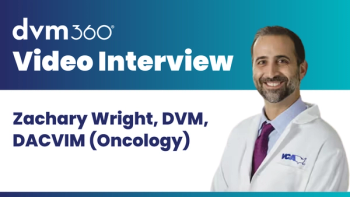
Demand for reptile care in veterinary practice is rising

Pet owners are now seeking the same level of care for their reptiles as they would for a dog or cat, Jb Minter, DVM, MS, DACZM, explains in this video.
Reptile ownership is on the rise, prompting an increasing demand for reptile veterinary care, Jb Minter, DVM, MS, DACZM, director of animal health and chief veterinarian at the North Carolina Zoo in Asheboro, explains in this video interview. As Minter notes, veterinarians are now expected to provide the same level of medical and surgical care for reptiles as for dogs and cats. With this growing expectation comes a need to understand common reptile surgeries—procedures that small-animal surgeons can perform with the right resources, Minter explains.
Below is the video transcript, which has been lightly edited for clarity:
Jb Minter, DVM, MS, DACZM: What I want people to understand is there is a growing demand for reptile care in veterinary practice. So as ownership rises, this increase in the amount of reptiles that are being owned by people, and as this younger generation is coming on, that number has grown exponentially. Veterinarians need to recognize that...there's an increased demand for this advanced veterinary care for their patients. It’s no longer the thing where [veterinarians can say], “Well, it's a lizard. It's not doing well. I'm going to euthanize it.”
So, pet owners are seeking the same level of medical and surgical care for the reptiles as they would [for] a dog or cat. This includes understanding some basic and common surgeries, such as egg binding, shell fractures, and orthopedic procedures, as well as managing the complexity involved in some of the anesthesia and postsurgical care.
Again, with this human-animal bond that people are developing with reptiles, it is really important that we understand some of these basic things. Now, while it does require some specialized care and...some expertise, most small-animal surgeons—most people that are [at] small-animal practices—can do most of this stuff by themselves. They may need a few smaller implementations or instruments...but they can get by with a lot of different things that they may not realize they can do.
Newsletter
From exam room tips to practice management insights, get trusted veterinary news delivered straight to your inbox—subscribe to dvm360.






